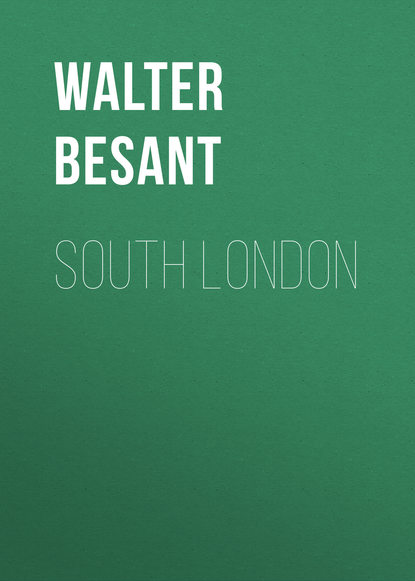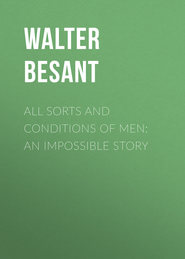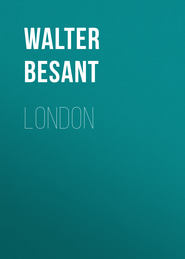По всем вопросам обращайтесь на: info@litportal.ru
(©) 2003-2024.
✖
South London
Настройки чтения
Размер шрифта
Высота строк
Поля
When Henry VI. returned after his coronation in 1432 —
'On returning from his Coronation in France King Henry the Sixth was met at Blackheath by the Mayor and citizens of London, on Feb. 21, 1431-2; the latter being dressed in white, with the cognizances of their mysteries or crafts embroidered on their sleeves; and the Mayor and his brethren in scarlet.
'When the King came to London Bridge, there was devised a mighty giant, standing with a sword drawn, and having this poetical speech inscribed by his side:
'All those that be enemies to the King,
I shall them clothe with confusion,
Make him mighty by virtuous living,
His mortal foes to oppress and bear them down:
And him to increase as Christ's champion.
All mischiefs from him to abridge,
With grace of God, at the entry of this Bridge.
'When the King had passed the first gate, and was arrived at the drawbridge, he found a goodly tower hung with silk and cloth of arras, out of which suddenly appeared three ladies, clad in gold and silk, with coronets upon their heads; of which the first was dame Nature, the second dame Grace, and the third dame Fortune. They each addressed the King in verses similar to those already quoted, and which, together with those which followed, the curious will find in their place. On each side of them were ranged seven virgins, all clothed in white; those on the right hand had baudricks of sapphire colour or blue, and the others had their garments powdered with golden stars. The first seven presented the King with the seven gifts of the Holy Ghost – sapience, intelligence, good counsel, strength, cunning, pity, and dread of God: and the others with the seven gifts of grace, in these verses:
'God thee endow with a crown of glory,
And with the sceptre of clemency and pity,
And with a sword of might and victory,
And with a mantle of prudence clad thou be,
A shield of faith for to defend thee,
A helm of health wrought to thine increase,
Girt with a girdle of love and perfect peace.
'After which they sang a roundel, the burthen of which was "Welcome out of France."'
The Pageant which welcomed Queen Margaret of Anjou on her Coronation presented, first, at the Bridge Foot at Southwark, 'Peace and plenty,' with the motto 'Ingredimini et replete terram,' – Enter ye and replenish the earth – and the following verses were recited:
Most Christian Princesse, by influence of grace,
Doughter of Jherusalem, owr pleasaunce
And joie, welcome as ever Princess was,
With hert entier, and hoole affiaunce:
Cawser of welthe, ioye, and abundaunce,
Youre Citee, yowr people, your subgets all,
With hert, with worde, with dede, your highnesse to avaunce,
Welcome! Welcome! Welcome! vnto you call.
.. .
Upon the Bridge itself appeared Noah's Ark, with the words, 'Jam non ultra irascar super terram' (Genesis viii. 21), and the following verses were addressed to the Queen:
So trustethe your people, with assurance
Throwghe yowr grace, and highe benignitie.
'Twixt the Realms two, England and Fraunce,
Pees shall approche, rest and vnite:
Mars set asyde with all his crueltye,
Whiche too longe hathe trowbled the Realmes twayne;
Byndynge yowr comfortem in this adversite,
Most Christian Princesse owr Lady Soverayne.
Right as whilom, by God's myght and grace,
Noe this arke dyd forge and ordayne;
Wherein he and his might escape and passe
The flood of vengeance caused by trespasse:
Conveyed aboute as God list him to gye,
By meane of mercy found a restinge place
After the flud, vpon this Armonie.
Vnto the Dove that browght the braunche of peas,
Resemblinge yowr symplenesse columbyne,
Token and signe that the flood shuld cesse,
Conducte by grace and power devyne;
Sonne of comfort 'gynneth faire to shine
By yowr presence whereto we synge and seyne.
Welcome of ioye right extendet lyne
Moste Christian Princesse, owr Lady Sovereyne.
On the marriage of Katharine of Aragon with Prince Arthur there was a great Pageant. The part at the south entrance of the Bridge is thus described:
'It consisted of a tabernacle of two floors, resembling two roodlofts; in the lower of which sat a fair young lady with a wheel in her hand, in likeness of Saint Katherine, with many virgins on every side of her; and in the higher story was another lady, in likeness of Saint Ursula, also with a great multitude of virgins right goodly dressed and arrayed. Above all was a representation of the Trinity. On each side of both stories was one small square tabernacle, with proper vanes, and in every square was a garter with this poesy in French, Onye soit que male pens, inclosing a red rose. On the tops of these tabernacles were six angels, casting incense on the Trinity, and the two Saints. The outer walls were painted with hanging curtains of cloth of tissue, blue and red; and at some distance before the pageant were set two great posts, painted with the three ostrich feathers, red roses, and portcullisses, and surmounted by a lion rampant, holding a vane painted with the arms of England. The whole work was carved with timber, and was gilt and painted with biss and azure.'
The next Pageant that passed through Southwark was that of Charles the Second at his Restoration:
'On the 29th of May, 1660, the Lord Mayor and Aldermen met the King at St. George's Fields in Southwark, and the former, having delivered the City sword to his Majesty, had the same returned with the honour of knighthood. A very magnificent tent was erected in the Fields, provided with a sumptuous collation, of which the King participated. He then proceeded towards London, which was pompously adorned with the richest silks and tapestry, and the streets lined with the City Corporations and trained bands; while the conduits flowed with a variety of delicious wines, and the windows, balconies, and scaffolds were crowded with such an infinite number of spectators, as if the whole collective body of the people had been assembled to grace the Royal Entry.
'The procession was chiefly composed of the military. First marched a gallant troop of gentlemen in cloth of silver, brandishing their swords, and led by Major-General Brown; then another troop of two hundred in velvet coats, with footmen and liveries attending them, in purple; a third led by Alderman Robinson, in buff coats with cloth of silver sleeves and very rich green scarfs; a troop of about two hundred, with blue liveries laid with silver, with six trumpeters, and several footmen, in sea-green and silver; another of two hundred and twenty, with thirty footmen in grey and silver liveries, and four trumpeters richly habited; another of an hundred and five, with grey liveries, and six trumpets; and another of seventy, with five trumpets; and then three troops more, two of three hundred and one of one hundred, all gloriously habited, and gallantly mounted. After these came two trumpets with his Majesty's arms; the Sheriffs' men, in number fourscore, in red cloaks, richly laced with silver, with half-pikes in their hands. Then followed six hundred of the several Companies of London on horseback, in black velvet coats, with gold chains, each Company having footmen in different liveries, with streamers, &c.; after whom came kettle-drums and trumpets, with streamers, and after them twelve ministers (clergymen) at the head of his Majesty's life-guard of horse, commanded by Lord Gerrard. Next the City Marshal, with eight footmen in various colours, with the City Waits and Officers in order; then the two Sheriffs with all the Aldermen in their scarlet gowns and rich trappings, with footmen in liveries, red coats laid with silver, and cloth of gold; the heralds and maces in rich coats; the Lord Mayor bare-headed, carrying the sword, with his Excellency the General (Monk) and the Duke of Buckingham, also uncovered; and then, as the lustre to all this splendid triumph, rode the King himself between his Royal brothers the Dukes of York and Gloucester. Then followed a troop of horse with white colours; the General's life-guard, led by Sir Philip Howard, and another troop of gentry; and, last of all, five regiments of horse belonging to the army, with back, breast, and head-pieces: which, it is remarked, "diversified the show with delight and terror."'
On November 26, 1697, after the Peace of Ryswick, William the Third made a triumphant entry into London:
'He came from Greenwich about ten o'clock, in his coach, with Prince George and the Earl of Scarbrough, attended by four score other coaches, each drawn by six horses. The Archbishop of Canterbury came next to the King, the Lord Chancellor after him, then the Dukes of Norfolk, Devon, Southampton, Grafton, Shrewsbury, and all the principal noblemen. Some companies of Foot Grenadiers went before, the Horse Grenadiers followed, as did the Horse Life-Guards and some of the Earl of Oxford's Horse; the Gentlemen of the Band of Pensioners were in Southwark, but did not march on foot; the Yeomen of the Guard were about the King's coach.
'On St. Margaret's Hill in Southwark the Lord Mayor met his Majesty, where, on his knees, he delivered the sword, which his Majesty returned, ordering him to carry it before him. Then Mr. Recorder made a speech suitable to the occasion, after which the cavalcade commenced.
'A detachment of about one hundred of the City Trained Bands, in buff coats and red feathers in their hats, preceded; then followed two of the King's coaches, and one of Prince George's; then two City Marshals on horseback, with their six men on foot in new liveries; the six City Trumpets on horseback; the Sheriff's Officers on foot with their halberds and javelins in their hands; the Lord Mayor's Officers in black gowns; the City Officers on horseback, each attended by a servant on foot, viz.: the four Attorneys, the Solicitor and Remembrancer, the two Secondaries, the Comptroller, the Common Pleaders, the two Judges, the Town Clerk, the Common Serjeant, and the Chamberlain. Then came the Water Bailiff on horseback, carrying the City banner; the Common Crier and the Sword-bearer, the last in his gown of black damask and gold chain; each with a servant; then those who had fined for Sheriffs or Aldermen, or had served as such, according to their seniority, in scarlet, two and two, on horseback; the two Sheriffs on horseback, with their gold chains and white staffs, with two servants apiece; the Aldermen below the chair on horseback, in scarlet, each attended by his Beadle and two servants; the Recorder, in scarlet, on horseback, with two servants; and the Aldermen above the chair, in scarlet, on horseback, wearing their gold chains, each attended by his Beadle and four servants. Then followed the State all on horseback, uncovered, viz.: the Knight Marshall with a footman on each side; then the kettle-drums, the Drum-Major, the King's Trumpets, the Serjeant Trumpet with his mace; after followed the Pursuivants at Arms, Heralds of Arms, Kings of Arms, with the Serjeants at Arms on each side, bearing their maces, all bare-headed, and each attended with a servant. Then the Lord Mayor of London on horseback, in a crimson velvet gown, with a collar and jewel, bearing the City sword by his Majesty's permission, with four footmen in liveries; Clarenceux King at Arms supplying the place of Garter King at Arms on his right hand, and one of the Gentleman Ushers supplying the place of the Gentleman Usher of the Black Rod on his left hand, each with two servants. Then came his Majesty in a rich coach, followed by a strong party of Horseguards; and the Nobility, Judges, &c., according to their ranks and qualities, there being between two and three hundred coaches, each with six horses.'
On September 20, 1714, George the First was received by the Mayor and Corporation at St. Margaret's Hill, Southwark, with much the same state as that of William III. seventeen years before.
The Lord Mayor's Pageants, of which there were so many, had nothing to do with Southwark at all, except when they were water processions, in which case they could be seen as well from the South as from the North. But, in fact, Southwark was wholly disregarded in all these Pageants. The sovereign rode through the City, not through Southwark. Why should the place be regarded at all? Practically, as has been shown over and over again, it consisted of nothing at all but a causeway and an embankment, and what was once a broad Marsh drained and divided into fields and gardens and woods.
I have set down what royal processions Southwark was permitted to see, but I do not suppose that among the four hundred citizens who went out in one livery to meet King Richard there was one man from Southwark, nor do I suppose that when nine hundred and sixty citizens, each man carrying a silver cup, rode through London with the Coronation procession, there was a single man from the quarter south of London Bridge. In other words, although in course of time there was appointed – never elected – an Alderman of the Bridge Without, at no time in these Pageants or in these functions was Southwark ever regarded as part of the City, nor were her wishes consulted or her interests considered.
One Pageant alone – that of our own time – the splendid Pageant of 1897, reversed this position. As is well known, the Procession which celebrated the Sixty Years' Reign passed through the Borough as well as the City.
CHAPTER VI
A FORGOTTEN WORTHY
I have to speak of a 'worthy' of Southwark who is only now remembered by the curious as the alleged original of Sir John Falstaff. If Shakespeare drew his incomparable knight from a portrait of Sir John Fastolf, then one can only say that the portrait in no single particular resembled the original. Sir John Fastolf was a great and, on the whole, a successful soldier who spent forty years fighting and commanding in France. Shakespeare's knight was unwarlike, even cowardly; fat: a frequenter of taverns and of low company, with no dignity and no authority. The only point that may lend colour to the theory that Fastolf was Falstaff lies in the fact that Fastolf was accused of cowardice at a certain battle, one of the many which he fought: and that on his return from France, the English, exasperated at their losses, laid the blame as they always do upon their most distinguished soldiers. Fastolf was as unpopular in his old age as any defeated general: there is no unpopularity so great: yet Fastolf was never a defeated general.
Shakespeare knew no more about Fastolf than the traditional charge of cowardice. In the First Part of 'Henry VI.' he presents him running away:
Captain. Whither away, Sir John Fastolfe, in haste?











